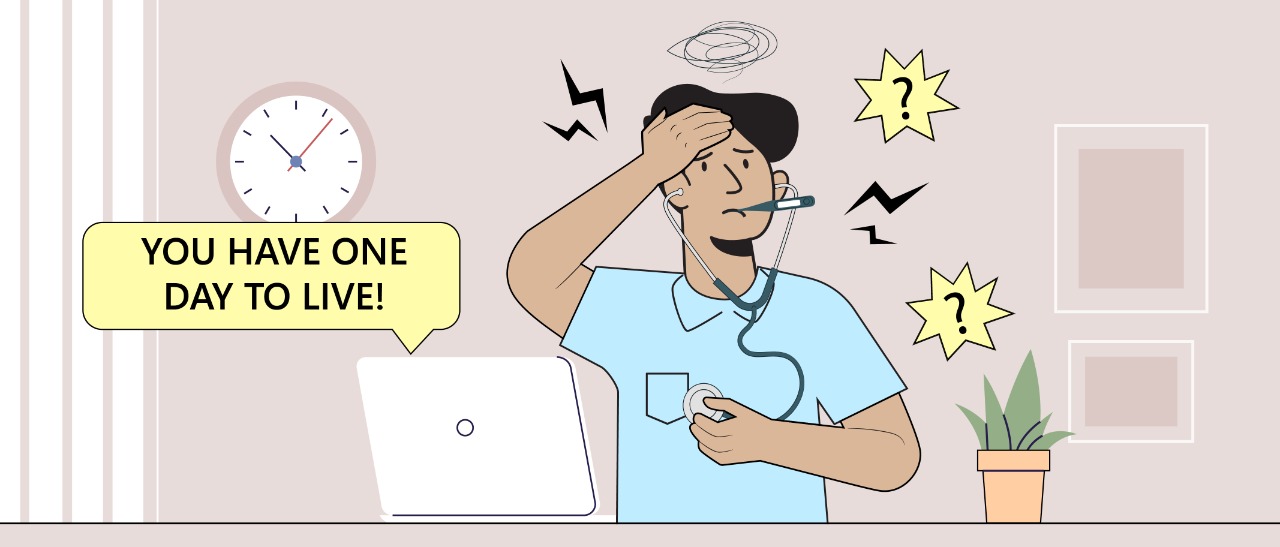If you google ‘ways to reduce weight without exercise’, intermittent fasting will probably show up in the first 5 search results. One of the trendiest ways to get leaner, intermittent fasting has caught up with the millennials big time. Whether it’s speeding up your metabolism or preventing heart diseases, this method claims to cure everything. So if you’re thinking of trying the internet’s most favoured way of reducing bulge, here’s all you need to know about it.
What is intermittent fasting?
Against the misleading notion that the name carries, intermittent fasting is really not so much of a fast as an eating pattern. It’s a way to get your body in a specific routine for eating your meals in a specific time frame and fasting for the rest of the time. Coffee and fluids are of course exceptions to this fast.
Contrary to popular belief that millennials invented it as an excuse to skip breakfast, intermittent fasting has existed for a long time. Researchers at Johns Hopkins believe the process of evolution is at play here. They claim early men and women didn’t have access to grocery stores but they survived just fine. This is because interestingly our bodies can go without solid food for days at length.
The benefits:
Intermittent fasting is done in ratios where you fast for a considerably longer or equal duration as the period in which you eat.
There are many benefits of a diet cycle like this. Not only does it help you lose weight and visceral fat, but it also changes your blood insulin and hormone levels. This helps you prevent type-2 diabetes, improve your metabolism, and battle insulin resistance.
Intermittent fasting can also reduce inflammation in your body and the risk of heart diseases.
How does it work?
When you eat, you gain calories that help you go about with your daily activities. When you work, walk or even sleep, you burn calories. Calories are like the fuel on which our bodies work. Excess fuel leads to a buildup in our bodies in the form of fat.
But what happens when you eat proper meals but don’t spend any time exercising or end up indulging in snacking? You don’t end up burning any fuel and your body goes into fat storage mode.
When you fast for a long time, you give your body time to use up the calories that you gained while eating. After it exhausts all those calories, your body undergoes something called metabolic switching.
Metabolic switching is when your body starts using your fat storage as calories to perform its daily functions. When you do an intermittent fast, you stretch the time you go without consuming calories which lets your body reach this stage. The more you stretch your period of fasting, the more calories you burn.
The methods of intermittent fasting
There’s no one-size-fits-all formula for intermittent fasting. In fact, it has a lot to do with your individual ability to control your hunger. Normally, there are 4 methods of doing an intermittent fast, each with their own benefits and issues.
- 16:8 method:
This is the most common intermittent fasting method where you fast for 16 hours and eat in the 8-hour window that’s left.
Most people who end up doing this call it a night after an early dinner to avoid snacking during the night. Another reason for this is that our natural metabolism slows down after 8 pm making it harder for our bodies to digest food. Think of the 8 hours as a work shift where you can eat from 10 am to 6 pm and then wait it out till it’s 10 am again.
- 5:2 method:
The 5:2 method is a common intermittent fasting method where you eat normally as you do for 5 days in a week and fast for 2 days.
Fasting on the two days within the week does not mean you can’t eat anything. It just means that you should not consume more than 500-700 calories in those 2 days. It’s also not advisable to fast on two consecutive days. You should ideally spread it out.
The 5:2 method is a good way to ease into an intermittent fasting lifestyle especially when you’re a beginner or love snacking way too much. For best results, you should avoid junk food on the 5 days you’re not fasting.
- Eat-stop-eat method or the 24-hour fast:
This is when you go on a hunger strike for 24 hours a week. You can do this once or twice a week depending on how long you can take it. When you’re fasting for 24 hours, you can consume water, tea, coffee, or other calorie-free drinks.
This isn’t a beginner-level diet method and it isn’t suitable for many people. Many people who have tried this have experienced nausea, dizziness, and headaches.
- The warrior diet or the 20:4 method:
The warrior diet is one where you fast for 20 hours and eat a large meal you need for sustenance in a 4 hour period. Just so you don’t faint, in the 20 hour fasting period, you can consume raw fruits and vegetables.
The warrior diet is not for someone who is just starting out or unsure of how this will pan out. It’s for people who have tried intermittent fasting long enough to handle this. The warrior diet doesn’t suit everyone and often disrupts your digestive as well as your immune system.
The most common and perhaps, safest method of intermittent fasting remains the 16:8 method. Many people have tried it and it’s usually recommended to prevent illnesses.
Who is this not for?
Now, let’s come to the bitter pills to swallow. Intermittent fasting with all its benefits isn’t for everyone. The side effects of going on an intermittent diet can range from lightheadedness to cancer. So even as you’re charmed by the benefits, don’t try it if you are one of the following:
- Pregnant or Breastfeeding: Pregnant or breastfeeding mothers are providing nutrition for two people. Skipping meals or starving your body will not only affect the mother but also the child. You shouldn’t try intermittent fasting if you are trying to conceive, are having fertility issues or have skipped your periods.
- Adolescents or children: When your body is growing you need all the nutrition you can get. Children can also be less mindful of eating a balanced diet than adults which can make them malnourished. Dietitians don’t recommend children below the age of 18 to try this.
- Diabetic or Hypotensive: People who have blood sugar regulation problems should not fast for long and take their meals on time to avoid any complications. The same goes for people with low blood pressure since they need meals spread out throughout the day for better balance.
- People with a history of eating disorders: For people who suffer from eating disorders, intermittent (or any diet) is a bad idea. You shouldn’t skip meals without consulting a doctor first.
What should you keep in mind?
You can lose muscle mass:
Intermittent fasting is primarily a method of weight and fat reduction. Like any other dieting method, this makes you lose muscle mass. To make up for it, you need to eat more protein than carbohydrates.
You still need to exercise:
A common myth around intermittent fasting is that it’s easy. You don’t need to sweat it out in the gym to lose weight. It’s partly true but nutritionists do recommend going for walks or exercising for 30 minutes for best results.
A little cheating is fine:
Drinking herbal tea, green tea, or cinnamon tea and coffee is cool. Cinnamon and herbal teas also help suppress the need to eat.
Junk food still isn’t cool:
Indulging in late-night snacking, or snacking between meals is still as bad as it was before you started this diet. Best to avoid it altogether. For best results, try a Mediterranean diet.



